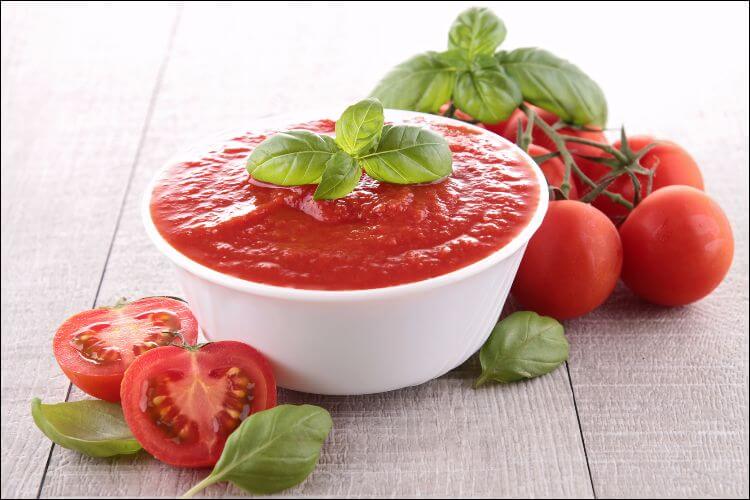Roma tomatoes, also called Italian or Italian plum tomatoes, are famous for being thick-walled and meaty. They have a thick flesh, which makes them perfect for making tomato paste and sauces. They are grown in Great Britain, the United States, Mexico and Australia, and you can grow them yourself if you like their taste. Today we are going to learn more about how to grow Roma tomatoes and what needs do they have.
Before Planting
1. Choose a Location
We must mention right from the start that the steps you need to follow when learning how to grow Roma tomatoes are not that different from those you take when growing regular tomatoes. Just like with a regular variety, it’s ideal if you can plant them directly in the ground. The biggest advantage if you decide to do so is that you won’t need to water them as often as you would in a container.
If you’re worried about the soil conditions or other diseases, it’s a good idea to plant it in a container as well or set up a raised bed. The non-compact soil in a raised bed lets the plant enjoy better drainage and aeration. Moreover, you don’t need to bend as much when caring for Roma tomatoes. With containers, you will need to water the plant more often since the soil dries out faster. Luckily, you can use something you have around as a container, such as upcycled buckets or barrels.
2. Provide Adequate Light
One essential thing you need to know when learning how to grow Roma tomatoes is that they need full sun. Make sure you offer them as much light as you can, whether you plant them directly into the ground or keep them in containers. Usually, it’s a good idea to place the containers right next to the window, for example. The minimum requirement would be to get them at least 6 hours of full sunlight a day. However, if you live in an area that is warm or hot, you may want to provide them with some shade during the afternoon.
3. Create the Perfect Soil
In general, tomatoes need a soil that is rich in organic matter. If you don’t know how to make your own compost, you can buy some from the store. Make sure it includes granite dust and topsoil. Alternatively, for the Roma tomatoes, you can add a slow release fertilizer.
As a rule, you need to add 5 – 8 pounds per square foot. The compost should be poured into the top 3 inches. Besides the compost, it’s recommended you add a couple handfuls of organic material or some eggshells at the bottom of the planting hole as well. When the roots will grow deep enough, they will reach the nutrients you put there, and you will get a fruit boost.
Besides the compost, you need to pay attention to the soil pH as well. This should stay somewhere between 6.0 and 6.8. Use a soil tester to find out more about it. If it’s higher, you should water the tomatoes with a mix of water and cold coffee in equal parts, or add mulch (preferably pine needles). If it’s lower, add dolomite lime or other calcium sources (calcite, egg shells, etc.).
Planting Roma Tomatoes
4. Start the Seeds
If you want to learn how to grow Roma tomatoes from seeds, you should allow them two months to develop before moving them. Check what’s the last frost date in the area you live in and start them two months before. Alternatively, you can buy seedlings or starts from your local garden or nursery and then transplant them when there’s no risk of frost anymore.
5. Transplant the Tomatoes
An important tip when removing the tomatoes from a pot, for example, is to tap its bottom. The trick here is to get the roots and soil out in one piece. If you rip the roots, you will damage the plant, so be careful with that.
When transplanting the tomatoes, it’s important to ensure they have enough space. If a regular guide on how to plant tomatoes tells you that you need to ensure them a space between 18 and 36 inches, here you can do with 14 – 20 inches. Tomato plant spacing is extremely important since it allows the plants to spread as much as they need. Moreover, in a hot climate, you should plant them close together, since in this way they will shade each other’s fruits.
The plant should be buried 50 – 80% into the soil. Make sure that the latter is firmly packed around the roots and that they are completely covered. You also need to trim off the lower leaves of the plant, so don’t bury them. If you do bury them, you will see that they will rot, and your entire plant is compromised.
Caring for Roma Tomatoes
6. Support the Plant
Once they start growing, tomatoes can reach some tall heights. For this reason, they need some extra support, such as stakes or cages. You should set them into the ground at the time of planting. Thus, the tomato will grow naturally on it. If you can’t do it right then, for some reason or another, you can do it later, but not more than 14 days.
Cages or Stakes?
A cage is one of the most popular methods to support tomatoes. You should consider building one when learning how to grow Roma tomatoes. It should measure at least 48 inches in height. However, there is the risk of bending if the plants become too heavy. Moreover, a cage can collapse during a summer storm, for example. As the plant grows, make sure you remove the leaves and secondary stems.
If you plan on using stakes, you should make sure they measure a minimum of 0.5 x 2 inches wide, and 6 – 8 feet long. You should pound them 12 – 24 inches deep and 2 inches away from the plant. With the Roma tomatoes, you can stake them off the ground when they reach 6 – 12 inches in height. Make sure the plant stays close to the stake by securing it with strips of cloth that are loosely knotted. Alternatively, you can also use garden twine, but make sure it doesn’t strangle the plant.
7. Watering Roma Tomatoes
After the first week, you should start watering them 7 – 10 days. They need around 500 ml of water each day. It’s better to water it directly at the roots with a hose or a dripping system instead of overhead watering. The latter can further encourage diseases. The best time to water the tomatoes is in the morning. Respect this if you want to prevent any fungal diseases or mold. If you live in an area with hot weather, increase the quantity of water.
8. Harvesting Tomatoes
One of the things people love about these tomatoes is the fact that they are determinate plants. This means that all the fruits ripen around the same time. This is a great advantage if you want to make a sauce. In 75 – 80 days from planting, you can start harvesting them. The best indicator for their ripeness is the color. The fruits should be firm and evenly colored. However, if there is a frost prediction in your area, you can pick the unripe fruits and store them in paper bags. Keep them at 60 degrees or so and they will ripe on their own.
Pests and Diseases
9. Preventing Pests and Diseases
The most convincing argument for learning how to grow Roma tomatoes and no other variety is the fact that they’re very resistant. They can resist fusarium, early blight, as well as verticillium wilt. These are common diseases among tomatoes. In case you notice a water-soaked area next to the bottom of your fruit, it may suffer from blossom end rot. This is triggered by a calcium deficiency. If you want to avoid this, you shouldn’t plant the tomatoes until the soil is warm, and make sure it’s evenly moist.
Another issue that might cause you some problems are the tomato hornworms. They look like big, green caterpillars who are camouflaged on the stems of the tomato plants. The easiest thing to do is to pick them off. If you want to prevent any of these issues, it’s better to choose a variety that grows well in our area when deciding on how to grow Roma tomatoes.
10. Storing Tomatoes
When learning how to grow Roma tomatoes, if you want to store them, you should know that it’s better to can or freeze them. Since they are slightly acidic, it would be better to process them in a water bath canner and not a pressure one. The process of canning them is quite easy, but freezing them is even easier. You can make the puree first and simply freeze it so that you’ll have it ready for soups, salsas or marinara sauce.
Conclusion
Many people choose to learn how to grow Roma tomatoes because they are more resistant to plenty of diseases that commonly affect tomatoes. At the same time, if you’re a salsa fan, you will most likely use this variety all the time. The growing conditions don’t differ much from those of typical tomatoes, but you need to pay attention to the light and water conditions.
Image source: depositphotos.com












